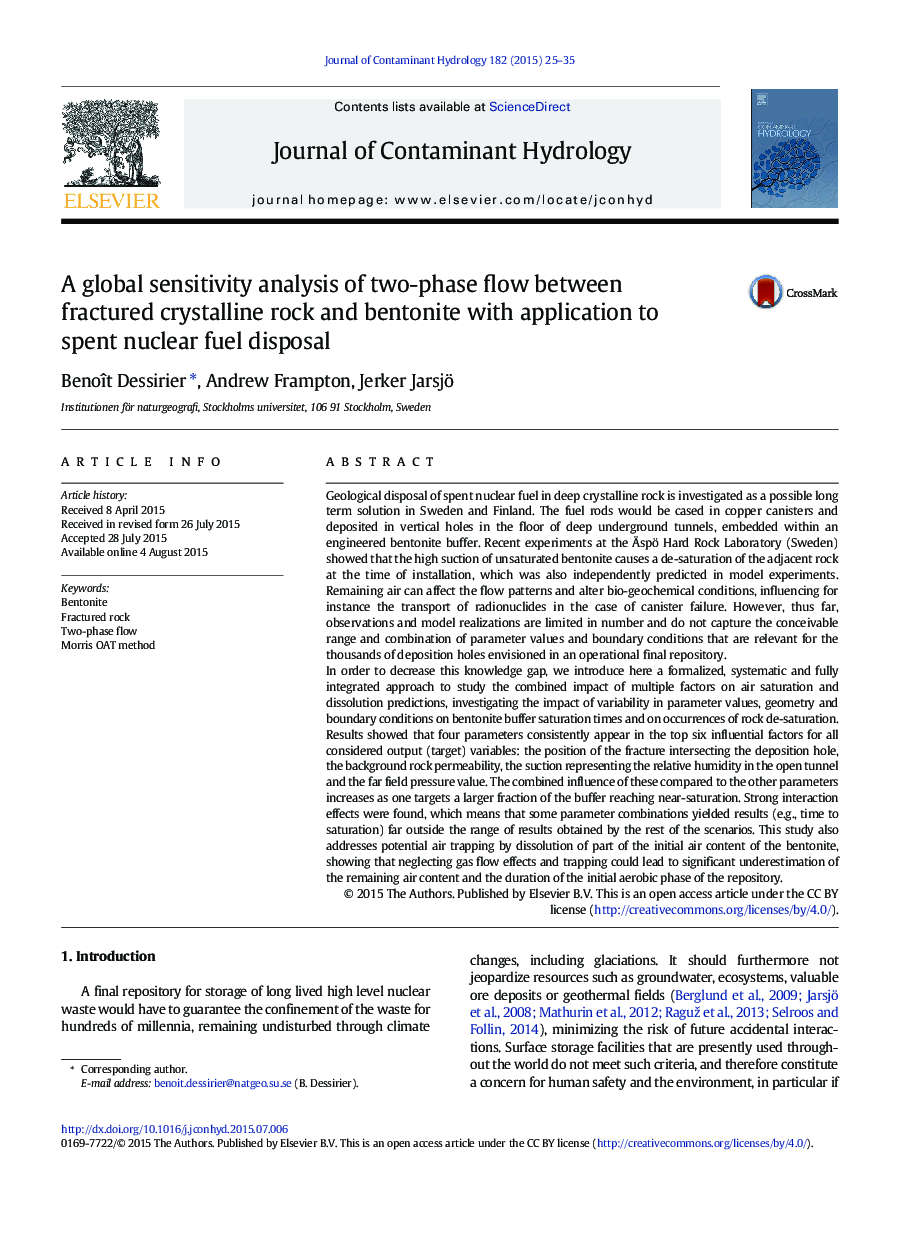| Article ID | Journal | Published Year | Pages | File Type |
|---|---|---|---|---|
| 6386410 | Journal of Contaminant Hydrology | 2015 | 11 Pages |
Abstract
In order to decrease this knowledge gap, we introduce here a formalized, systematic and fully integrated approach to study the combined impact of multiple factors on air saturation and dissolution predictions, investigating the impact of variability in parameter values, geometry and boundary conditions on bentonite buffer saturation times and on occurrences of rock de-saturation. Results showed that four parameters consistently appear in the top six influential factors for all considered output (target) variables: the position of the fracture intersecting the deposition hole, the background rock permeability, the suction representing the relative humidity in the open tunnel and the far field pressure value. The combined influence of these compared to the other parameters increases as one targets a larger fraction of the buffer reaching near-saturation. Strong interaction effects were found, which means that some parameter combinations yielded results (e.g., time to saturation) far outside the range of results obtained by the rest of the scenarios. This study also addresses potential air trapping by dissolution of part of the initial air content of the bentonite, showing that neglecting gas flow effects and trapping could lead to significant underestimation of the remaining air content and the duration of the initial aerobic phase of the repository.
Related Topics
Physical Sciences and Engineering
Earth and Planetary Sciences
Earth-Surface Processes
Authors
Benoît Dessirier, Andrew Frampton, Jerker Jarsjö,
